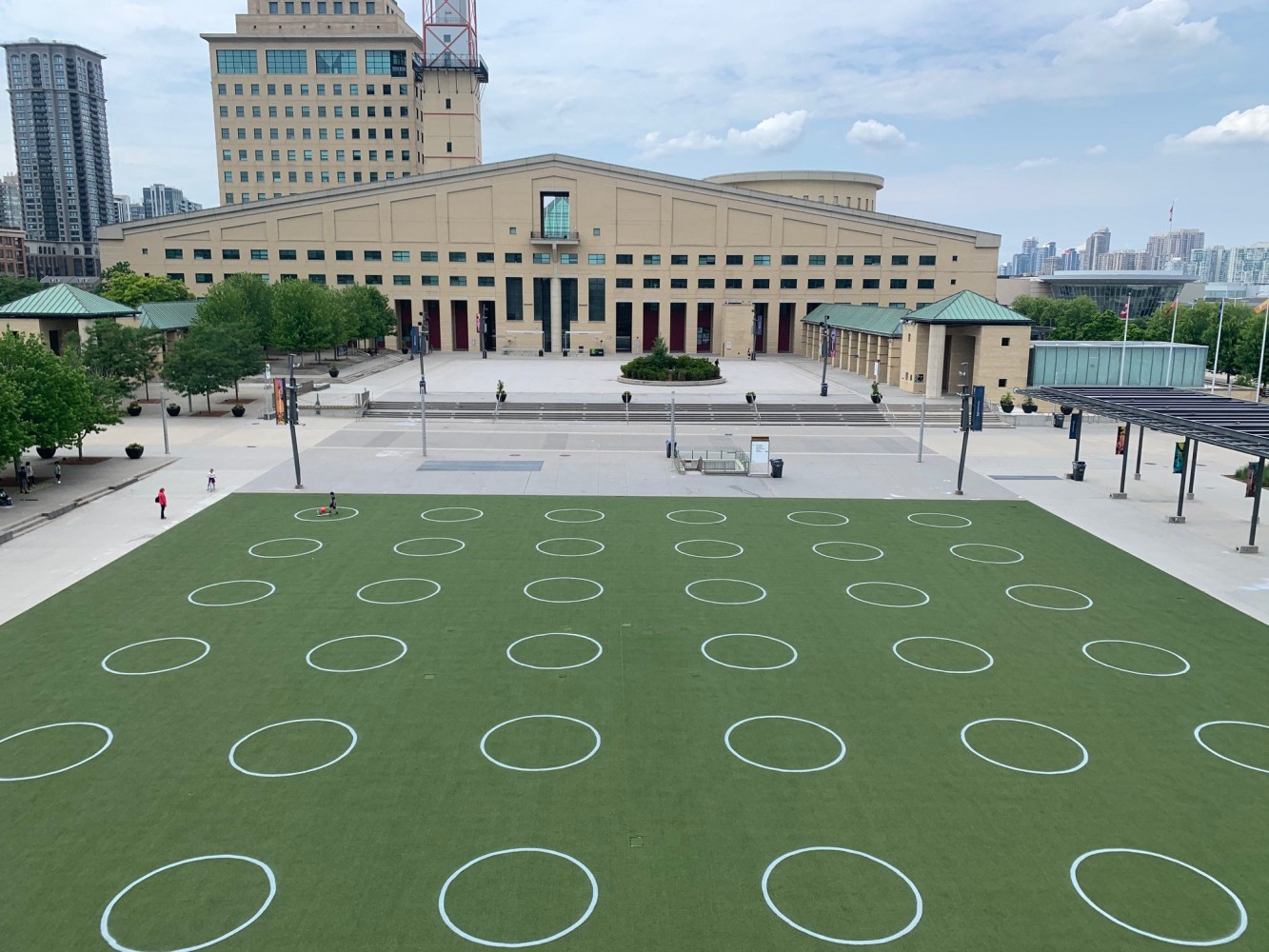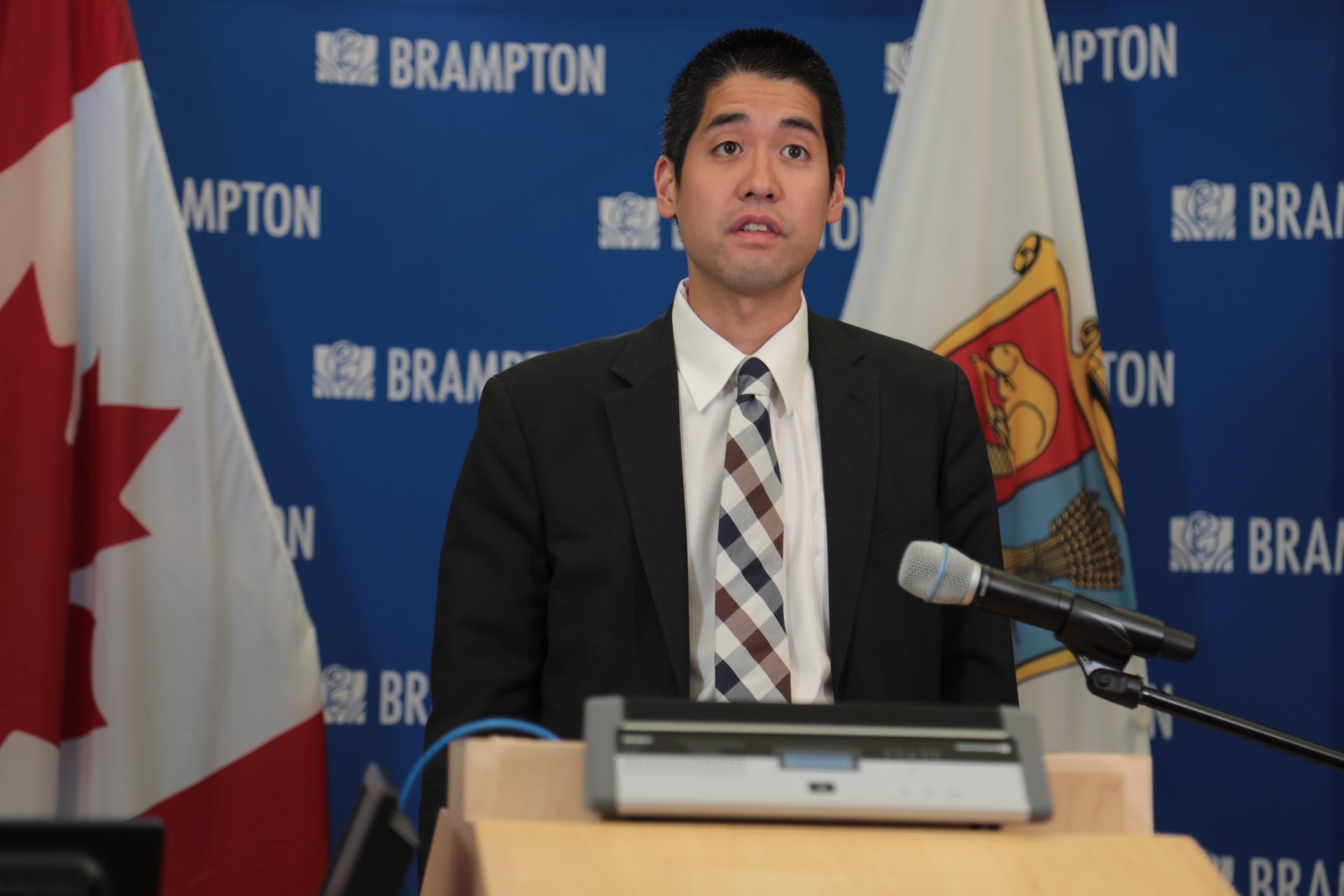
Peel’s Wednesday COVID total blows past Toronto; Mississauga councillors fear full lockdown
Ocean scientists know, when watching a tsunami threaten coastal populations, the second wave is often worse than the first. They travel at super speeds only a foot above the surface until they rapidly grow into a wall of water before devastating everything in their path.
There’s a reason epidemiologists use a similar description when talking about pandemics.
The first wave of COVID-19 hit hard, appearing to plateau in May when Peel recorded 189 cases of the novel coronavirus to start the month, and 150 on the 25th. Extreme measures including widespread lockdowns had been imposed. The numbers quickly receded and summer arrived.
By early August, Peel, like many other jurisdictions around the world, looked like it had moved past the worst part of the global crisis.
Restrictions were lifted and life was returning to normal.

While the summer months retained some of the public health restrictions to prevent the spread of COVID-19, a degree of normalcy had returned, and outdoor events resumed.
But the experts, the women and men who know best how a highly contagious virus behaves, warned a second wave would come. It was inevitable. Like the knowledge we have of natural disasters, they knew this one could be worse than the first.
On Wednesday, Peel learned of 468 new infections in a single day, the highest total yet, and almost three times higher than the levels seen at the peak of the first wave.
Peel has now become the COVID-19 hotspot of the province — if not Canada — with case totals on Wednesday far surpassing Toronto. With 384 new cases, Canada’s largest city had a rate of 12.8 new infections in one day for every 100,000 residents, while Peel’s rate was 31.2.
These are tsunami-like numbers. A rising wall of the virus is crashing over the region.

Peel's case numbers per capita (pink) are far exceeding those of Toronto (purple), Ottawa (green) and Hamilton (yellow). Note: the drop in most recent data should not be viewed as a decline in cases, but a lag in reporting of data.
Many in the public might remain unaware of how dire the figures are, because Toronto often gets most of the headlines, partly because of the tendency to look at overall numbers instead of per capita data, and partly because there is so much media focus on Ontario’s capital.
But the 1.5 million residents of Peel are quickly realizing COVID-19 infections have been consistently worse here than in Toronto, driven by a sharp increase in new Brampton cases since the middle of August, and further exacerbated by more recent case numbers in Mississauga, where Mayor Bonnie Crombie says the virus has been “fully unleashed”.
Peel Public Health, led by Medical Officer of Health Dr. Lawrence Loh, has introduced stricter measures to help control the surging viral spread which, by many indicators, is overwhelming regional capacity to contain, trace, and treat it.
A team of 70 new contact tracers needed to be brought in by the Province after Peel’s tracing efforts faltered to a point where many of those who tested positive were not being notified about their diagnoses within 24 hours from the time public health officials received the results. Between October 27 and November 2, only 56 percent of residents who tested positive were informed within the target of 24 hours. This means, as the virus gets further out of control, people who are carrying the microscopic killer, don’t even know it, despite a positive test result that can’t be reported out within an acceptable time frame.
Further restrictions — above and beyond the Province’s new colour coded system — have been introduced by Loh to try and help hospitals in Brampton and Mississauga, currently at, or days away from full capacity.
In a report going before Regional Council on Thursday, Dr. Loh details how the pandemic is straining Peel Public Health’s resources, degrading the quality of its life-saving work.
As a result, problems include:
- An unfulfilled mandate in contact tracing of COVID-19 cases within 24 hours
- An unfulfilled mandate for vaccine program planning and implementation within schools, flu immunization, and mass immunization for COVID-19
- An unfulfilled mandate in providing mandated public health inspections and responding to an increased demand for service requests
- An increase in opioid-related harms and deaths
- A loss of capacity to process data, guide decision making and inform the public
Dr. Loh has made it crystal clear, the situation in Peel is growing “increasingly dire”.
Yet, on Wednesday, Mississauga councillors lamented the new restrictions being placed on businesses wishing to reopen and the lack of coordination. Many councillors expressed fear that Dr. Loh could now be considering a full lockdown of the region.

Dr. Lawrence Loh, Peel's medical officer of health
In a brief comment to The Pointer, Loh said he was noting rising case counts with “alarm” and said if things don’t improve in the next seven to 10 days, “additional measures may be needed, including the possibility of broad closures.” He said a shutdown would be a decision for the Province to make under its new framework.
During Wednesday’s meeting, which returned to an entirely online format in response to growing case counts, councillors were presented with the legal framework and implications of Dr Loh's orders issued Saturday. City staff tried to explain the Province’s red zone and how measures recommended by Dr. Loh go further, to reduce Peel’s viral spread, which is currently worse than any other part of Ontario.
Some council members, from the comfort and safety of their own home, to protect them from the threat of infection, seemed unaware that calls to allow businesses to remain open fly in the face of not only their own behaviour, but of all the data.
More and more medical experts in Ontario and across Canada are advising against further reopenings and the loosening of restrictions.
On Tuesday, Prime Minister Justin Trudeau took a strong stance.
“We are seeing record spikes this morning across the country so we urge premiers and mayors to please do the right thing, act now to protect public health,” Trudeau said. “I would hope that no leader in our country is easing public health vigilance because they feel pressured not to shut down businesses.”
Much of the discussion in Mississauga Wednesday ignored the Prime Minister’s direction. Council members wanted to know what was planned for Thursday’s Regional Council meeting and if Dr. Loh would suggest a full shutdown in Peel. Loh has not been explicit on the topic beyond his comments to The Pointer, also stating in his presentation for Regional Council that he is “looking at new interventions and policies to meet the evolving nature of the pandemic.”
Several councillors, including Karen Ras, Stephen Dasko and Carolyn Parrish, drew on conversations with business owners on the brink of economic ruin. They conveyed frustration at constantly changing rules and recounted stories of several owners bursting into tears over the chaos and confusion.
Councillor Parrish, in particular, pointed out restaurants are strictly regulated in normal times, for example to maintain strict food safety and hygiene licensing standards. She said it is not economically viable to have restaurants only allowed to operate at 10-person capacity (a rule that is part of the provincial framework, not Dr. Loh’s enhanced measures).
She suggested that "if we put a little pressure on Dr. Loh" at the Region, he could be convinced to change his rules to something less damaging for business owners that would still maintain health and safety standards.
While there’s no doubt entrepreneurs are struggling, Parrish did not address the possibility of deeper damage if the viral spread gets completely out of control.
Healthcare professionals have repeatedly stated that economic devastation, while incredibly harmful, needs to be balanced with considerations that place physical safety above all else.
Councillor Dasko said he had not heard enough emphasis on contact tracing from Dr. Loh, also sharing his frustration. His Ward 6 colleague, Ron Starr, voiced similar sentiments and mentioned the parallel “economic pandemic” taking place.
"The way things have been rolled out by the Province has been shameful to say the least," Dasko said.
The remarks fly in the face of The Ontario Hospital Association’s position. The group has heavily criticized the loosening of safety restrictions, while COVID’s second wave crashes over the province.
As part of its #StopTheSpread campaign, it states: “The Ontario Hospital Association recently launched a social media campaign aimed at encouraging Ontarians to pledge their ongoing commitment to #flattenthecurve, in order to help prevent the further spread of COVID-19.
These efforts to amplify vital public health advice and boost the public's commitment to containment efforts are particularly critical given the steep increase in daily positive cases, growing number of hospitalizations and limited acute care capacity.”
Email: [email protected]
Twitter: @isaaccallan
Tel: 647 561-4879
Email: [email protected]
Twitter: @JoeljWittnebel
COVID-19 is impacting all Canadians. At a time when vital public information is needed by everyone, The Pointer has taken down our paywall on all stories relating to the pandemic and those of public interest to ensure every resident of Brampton and Mississauga has access to the facts. For those who are able, we encourage you to consider a subscription. This will help us report on important public interest issues the community needs to know about now more than ever. You can register for a 30-day free trial HERE. Thereafter, The Pointer will charge $10 a month and you can cancel any time right on the website. Thank you.
Submit a correction about this story


